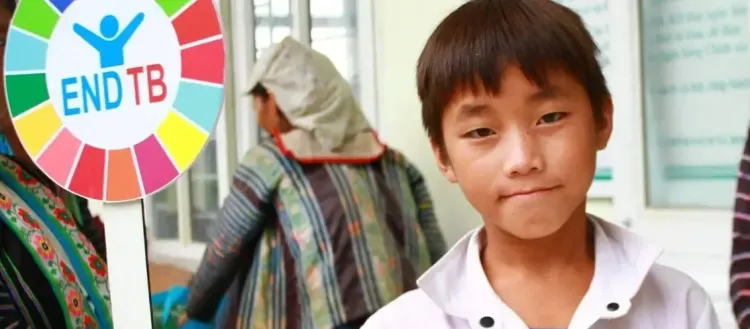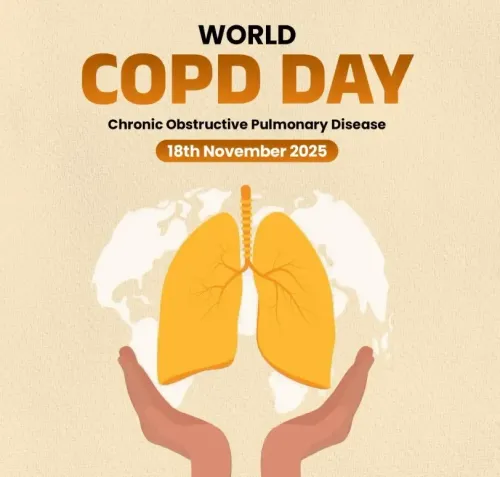How is India Achieving Remarkable Progress in Reducing TB Mortality?

Synopsis
Key Takeaways
- India's TB incidence has decreased by 21%.
- TB mortality rates have dropped from 28 to 21 per lakh population.
- Over 19 crore individuals screened under the TB Mukt Bharat Abhiyan.
- Globally, 10.7 million TB cases reported in 2024.
- Drug-resistant TB remains a significant challenge.
New Delhi, Nov 18 (NationPress) The World Health Organization (WHO) on Tuesday praised India for attaining remarkable progress in combatting tuberculosis (TB), specifically in narrowing detection gaps and lowering mortality rates.
According to the latest WHO Global Tuberculosis Report 2025, India's TB incidence dropped by 21 percent -- from 237 TB cases per lakh population in 2015 to 187 per lakh population in 2024 -- nearly double the global decline rate of 12 percent.
The TB mortality rate in India also saw a decline from 28 per lakh population in 2015 to 21 per lakh population in 2024, indicating significant progress in reducing TB-related deaths.
The flagship TB Mukt Bharat Abhiyan, initiated in December 2024, has successfully screened over 19 crore vulnerable individuals nationwide, resulting in the identification of more than 24.5 lakh TB patients, including 8.61 lakh asymptomatic cases, as reported.
Globally, 10.7 million individuals contracted TB, and 1.23 million succumbed to the disease in 2024.
The WHO noted that India, alongside other nations in the South-East Asia Region, experienced improvements in TB management.
In absolute figures, India was estimated to have 2.71 million TB patients, followed by Bangladesh with 384,000, Myanmar with 263,000, Thailand with 104,000, and Nepal with 67,000.
“Several countries exhibited promising progress. Bangladesh, India, and Thailand reported significant case notifications, narrowing the detection gaps,” stated the WHO.
“Despite the substantial TB-related mortality, improvements have been observed in several member countries. Bangladesh, Bhutan, India, Nepal, and Thailand documented declines in estimated deaths due to TB since 2015, aided by the revival of essential TB services in the post-Covid-19 period,” it added.
However, the global health organization indicated that the overall decline rate in South-East Asia remains inadequate to achieve the 2025 End TB goals.
The South-East Asia Region, which houses less than a quarter of the global population, accounts for more than one in every three new TB cases globally, as per WHO data.
Drug-resistant TB presents a serious challenge, with an estimated 150,000 new cases reported in 2024.
While the region has seen a 16 percent reduction in TB incidence since 2015, the mortality rates are not decreasing swiftly enough. Moreover, the region's TB incidence rate of 201 per 100,000 individuals remains significantly above the global average of 131, according to the UN health body.
“TB continues to pose a threat to health security and development in the South-East Asia Region, affecting the most disadvantaged populations the hardest,” remarked Dr. Catharina Boehme, Officer-in-Charge, WHO South-East Asia.
“We understand what is effective -- early detection, rapid treatment, prevention, and robust primary health care. What we now require is speed, scale, and persistent political and financial commitment,” she emphasized.
The TB burden in 2024 showed considerable variation across the region. Myanmar and Timor-Leste reported high TB incidence rates of around 480-500 per 100,000 population, ranking them among the highest incidence settings globally.
Bangladesh, Bhutan, India, Nepal, and Thailand reported incidence levels ranging from 146 to 269 per 100,000, reflecting steady yet insufficient declines.
Sri Lanka and the Maldives maintained relatively low incidence rates, with figures ranging from 50-99 and 10-49 cases per 100,000 population, respectively.









